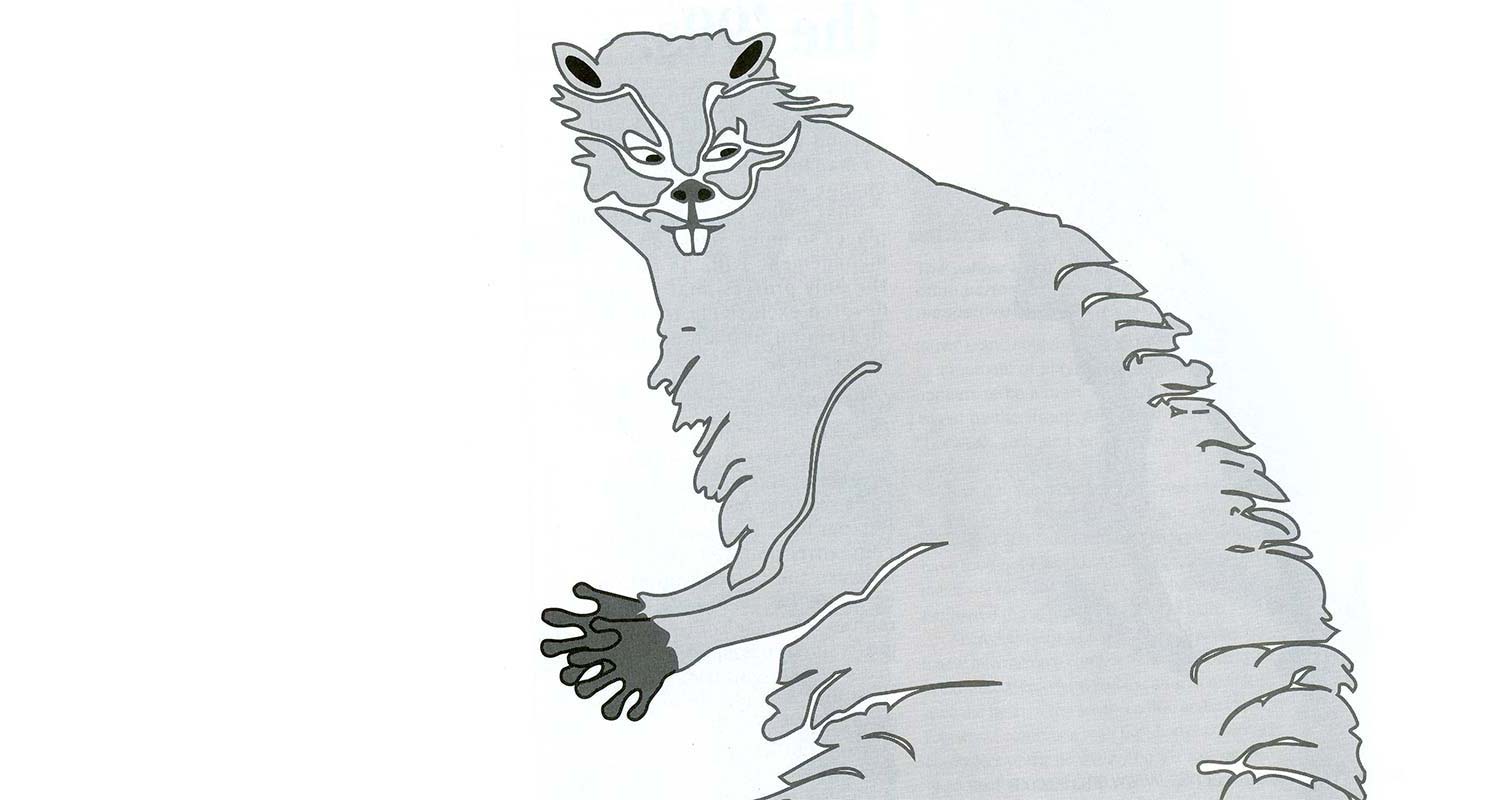China’s government officials have often said that “1997 will be a year to welcome two great happinesses,” according to dissident journalist Dai Qing. The double happiness? “Hong Kong will return to the motherland, and the Yangtze River will be dammed.” She adds, “Let us hope that the Yangtze and Hong Kong are not both damned in 1997.”
Canada’s federal government and business community once worried publicly about the fate of Hong Kong. However, the “Team Canada” approach to trade with China has silenced much of that apprehension. China’s Three Gorges hydroelectric project on the Yangtze River has been afforded even fewer misgivings. The Chrétien government has separated trade with China from the troubling environmental and human rights issues surrounding the dam’s construction.
China expects the Three Gorges Dam to flood 600 kilometres along the Yangtze River in Hubei and Sichuan Provinces. As a result, it will displace up to 1.5 million people from farms, villages, towns and cities over the next 20 years. China currently hopes to divert the river’s flow by the end of the year, allowing construction of the dam itself to begin. In so doing, China will owe considerable thanks to Canada for both “moral support” and financing.
The Chinese government has enterprising plans for the river. It says the Yangtze area will soon be “one of the world’s most important industrial development belts.” To oppose the building of the Three Gorges Dam, China argues, would be to deliberately obstruct the world’s largest nation from joining us in the developed world.
A Flawed Project
In a telephone interview, John Thibodeau, director of research for the monitoring agency Probe International, argued against China’s position. Speaking from Probe’s Toronto office, he said that “Canada has played a key role in promoting a potentially very seriously flawed project.”
In 1986, Canada’s bilateral aid organization, the Canadian International Development Agency (CIDA), provided $14 million Cdn in financing for a pivotal feasibility study of the dam’s design. The study was carried out by a Canadian consortium of public utilities and private engineering firms, under the supervision of the World Bank. Their conclusion was that the project was both safe and economically viable.
However, Thibodeau charges that under the study’s terms of reference, “The purpose was to come up with a document that would help the Chinese to build the dam-not really to determine whether it was feasible or not, but to find a way to build it.”
In 1989, Probe published Damming the Three Gorges: What Dam Builders Don’t Want You to Know, a lengthy critique of the feasibility study. Thibodeau recapped the independent experts’ findings: “There were miscalculations in all of the key areas-the effects of sediment on the reservoir, in terms of the impacts on resettlement, on endangered species, on flood control, on virtually every aspect of the project.”
Thibodeau is particularly concerned about the fate of the 1.5 million people to be resettled. “The money just isn’t there,” he said. The majority of the displaced will be farmers. Thibodeau pointed out that many will be forced onto the steeper, less fertile and erosion-plagued land higher up the Yangtze’s banks. Others face urbanization and unemployment.
Human Rights Being Dammed
Human Rights Watch/Asia, an American organization, has published additional concerns. It condemns China’s “restrictions on freedom to express criticism of the project; draconian measures by public security officials to deal with unrest that the massive population resettlement has sparked; arbitrary detention of dam opponents; and the use of forced labour in the dam’s construction.” China could have avoided damming the Yangtze altogether. Building a number of less disruptive, smaller dams on the river’s tributaries would have been both faster and cheaper. Despite a poor record of dam safety, China instead opted to follow a Western model by undertaking to build a massive symbol of modernization: the world’s largest dam.
Two thirds of China’s population (1.2 billion people) remain rural. China’s industrialization is in the interests of Canadian business. In an October 1996 talk to Langara College students, Canada-China Business Council executive Earl Drake emphasized the need to be “objective” rather than “emotional” in our relations with China.
For instance, Drake sees human rights in relative terms: “Asians believe we place too much emphasis on the political rights and freedoms of individuals and not enough on the rights of the collectivity to be protected from economic deprivation.” Drake also argues that environmental groups such as Probe International are unfairly “applying Canadian standards to China.”
Probe’s Thibodeau framed the Three Gorges controversy quite differently-in terms of responsibility. Canadian businesses “don’t have to ask the Chinese to change a thing,” he said. “All they have to do is decide not to become involved in [the project] themselves.” Moreover, Thibodeau believes that Canadian firms “should be bound to follow the same guidelines abroad as they do at home.”
Many Canadian exporters and importers do not share that belief. Indeed, they have shown great eagerness to access both the world’s largest market and one of its cheapest labour pools. Chrétien’s pivotal 1994 trade mission to China included not only nine provincial premiers but also a contingent of 400 representatives of private businesses and cultural organizations.
China could have avoided damming the Yangtze altogether.
Speaking in 1994 on CBC Radio’s Ideas, China expert Professor Robert Cosbey cynically pointed out that: “Foreigners may have high standards of integrity, but after all, the foreigners are there not to help China but to make money. If China’s low standards set the rules, so much the better.” There is always the fear, of course, that upholding standards would mean losing business to other countries with less particular ethics.
The Need For A Dam
China undoubtedly has a problem that presents a prime opportunity to Canadian dam builders. Controlling the Yangtze River is essential to China’s economic plans for the region. The Three Gorges Dam is designed to control floodwaters that regularly kill thousands when the river overflows its inadequate dikes. China also needs a safe lane for sea-bound ships, and plans to incorporate the world’s largest lock into the dam.
Furthermore, China needs cleaner energy to serve a heavy-industry based economy that is growing at nine per cent per year. It is the world’s largest consumer of high-sulphur coal, a major contributor to pollution and global warming. The Chinese government estimates that the Three Gorges Dam could supply fully 11 per cent of the nation’s power supply. (China will also be purchasing two Canadian Candu nuclear reactors, however.)
Canadian Exporter’s Benefit From China’s Needs
Canadian exporters hope to benefit substantially from China’s needs. Since 1994, the Three Gorges project has received at least $12.5 million US in repayable financing from the Export Development Corporation (EDC), a Crown corporation. (The corporation’s mandate is to provide financing, insurance and guarantees in support of Canadian exporters.) This helped finance China’s purchase of $30 million US in computer technology from the Canadian firm Monenco-AGRA. At the time, AGRA President Alex Taylor commented that “The Team Canada approach in China has produced tremendous new opportunities for Canadian firms.”
Further Canadian tax-payer financing is likely, because companies such as General Electric Canada are expected to bid on upcoming dam contracts. Moreover, the Chinese government currently projects a shortfall of at least $7.1 billion US over the life of the $28 billion US project.
An EDC spokesperson, Rod Giles, confirmed in correspondence that “other Canadian exporters have approached EDC and the project sponsors for financial and risk management support.” However, he said, “No other financing has been approved to date.” Canada is therefore the only country known so far to have provided export credit funding to the project, although the German government has just recently agreed to do so in principle.
Other Countries Declined Funding For Environmental Concerns
In contrast, the American export credit agency, Ex-Im Bank, declined support based on its congressionally mandated Environmental Procedures and Guidelines. The World Bank also declined. So did every international development agency, including Canada’s own, despite its funding of the initial feasibility study. All cited the project’s inherent economic, environmental or social risks.
Canada’s EDC is not, however, subject to the Canadian Environmental Assessment Act (nor is it subject to Canada’s Access to Information Act). It is not noted for seeking public input, reporting only to Parliament through the Minister for International Trade. Furthermore, EDC will not acknowledge whether it conducted any independent research or studies before deciding to support the Three Gorges project.
When asked about the specific decision process, spokesperson Giles responded only that “EDC applied its normal financial and technical analysis from a risk management perspective.” He added: “Current federal trade policy respecting China includes export support for the Three Gorges Dam. Accordingly, we are open to discussions with Canadian firms pursuing business with that project.”
Economist E. F. Schumacher once described the marketplace as the “institutionalisation of individualism and non-responsibility.” In his landmark book, Small is Beautiful: Economics as if People Mattered, he wrote: “To be relieved of all responsibility, except to oneself, means of course an enormous simplification of business. We can recognize that it is practical and need not be surprised that it is highly popular among businessmen.”
The Three Gorges Dam is but one example of the ethical dilemmas facing Canadian businesses in our global economy. And with little government-legislated accountability, it seems the responsibilities of the global marketplace are being left to the conscience of the individual.











